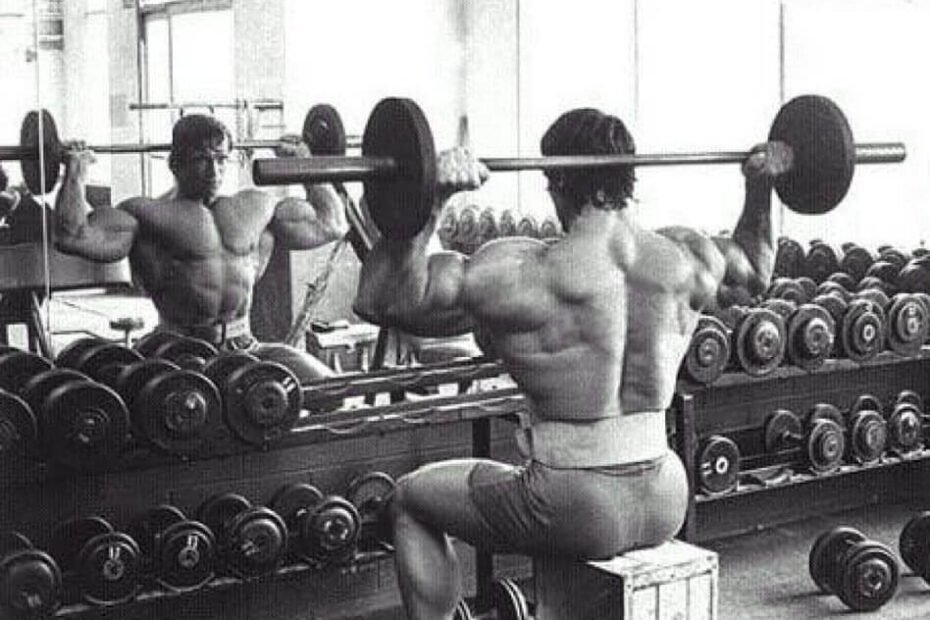The behind-the-neck press is a challenging shoulder exercise that targets the deltoid muscles. In this comprehensive guide, we’ll explore how to perform the behind-the-neck press correctly, the muscles worked, the benefits it offers, common mistakes to avoid, and variations & alternatives to enhance your shoulder training.
Muscles Worked
Primary Muscles Targeted:
- Deltoids (Shoulder muscles, specifically the anterior or front deltoid)
Secondary Muscles Engaged:
- Triceps (Back of the upper arm)
- Trapezius (Upper back muscles)
- Rotator Cuff (Stabilizing muscles of the shoulder)
How to Do the Behind-the-Neck Press
Follow these steps to perform the behind-the-neck press correctly:

- Starting Position: Stand with your feet shoulder-width apart. Grip a barbell with an overhand grip, hands positioned slightly wider than shoulder-width. The barbell should rest on your upper back, just above your shoulder blades. Lift the bar off the rack and step back a few steps to clear it.
- Body Position: Keep your back straight, chest up, and core engaged. Your head should be in a neutral position.
- Pressing Motion: Inhale and slowly lower the barbell behind your head by bending your elbows. Keep your back straight and avoid leaning forward.
- Full Extension: Exhale and press the barbell back up to the starting position, fully extending your arms.
- Repetition: Perform the movement for a specific number of repetitions or a set duration.
Benefits of the Behind-the-Neck Press
The behind-the-neck press offers several benefits for your shoulder development and overall fitness:
- Shoulder Strength: This exercise primarily targets the anterior deltoid, helping you build strength and definition in the front of your shoulders.
- Secondary Muscle Engagement: In addition to the deltoids, the triceps, trapezius, and rotator cuff muscles are engaged, creating a comprehensive shoulder workout.
- Functional Upper Body Strength: Developing strong shoulders contributes to improved upper body strength and performance in various activities and sports.
- Enhanced Shoulder Mobility: The exercise can help improve shoulder mobility and flexibility when performed with proper form.
Common Mistakes to Avoid
To maximize the effectiveness of the behind-the-neck press and minimize the risk of injury, be mindful of these common mistakes:
- Poor Form: Maintain a neutral spine and avoid leaning forward or backward during the exercise.
- Overarching Your Back: Keep your back straight and avoid arching it excessively.
- Using Excessive Weight: Start with a manageable weight to ensure you can maintain proper form and prevent shoulder strain.
- Behind-the-Neck Press Safety: Note that the behind-the-neck press can put your shoulders in a vulnerable position. If you have any pre-existing shoulder issues or discomfort, consider alternative shoulder exercises.
Variations & Alternatives
Variations:
- Seated Behind-the-Neck Press: Perform the exercise while seated on a bench with back support for added stability.
- Dumbbell Behind-the-Neck Press: Use dumbbells instead of a barbell for greater range of motion and muscle engagement.
Alternative Shoulder Exercises:
- Standing Military Press: Press the barbell from the front, targeting the anterior deltoids while minimizing shoulder strain.
- Arnold Press: A seated dumbbell press that involves a rotational motion, engaging various shoulder muscles.
- Lateral Raises: Isolate the lateral deltoids by lifting dumbbells or a barbell to the sides of your body.
- Front Raises: Target the front deltoids by lifting weights directly in front of you.
Incorporate the behind-the-neck press or its variations into your shoulder training routine to develop strong and defined shoulders, improve upper body strength, and enjoy the benefits of a well-conditioned upper body.
